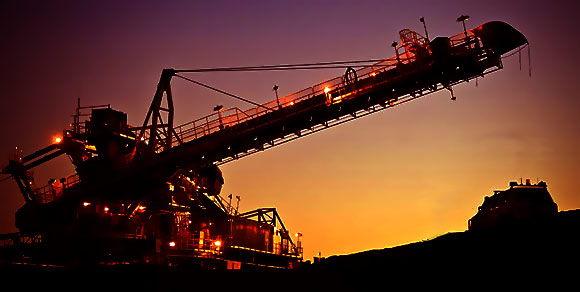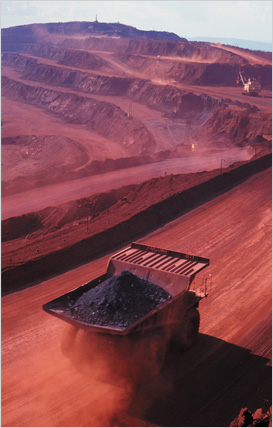The continued growth of many economies around the world has brought with it exceptional opportunities in mineral rich nations such as Australia. Long renowned as one of the strongest mining countries in the world, Australia offers some exceptional opportunities in the Mining industry. DGI’s mining strategy is to provide international investors and organizations access to Australian mining opportunities through either alliance or direct investment.
 DGI is dedicated to developing mining assets in Australia through either acquisition of existing mines or development of new mining leases. Currently DGI has projects under development in Iron, Copper, Tin and Gold.
DGI is dedicated to developing mining assets in Australia through either acquisition of existing mines or development of new mining leases. Currently DGI has projects under development in Iron, Copper, Tin and Gold.
The process of mining from discovery of an ore body through extraction of minerals and finally to returning the land to its natural state consists of several distinct steps. The first is discover y of the ore body, which is carried out through prospecting or exploration to find and then define the extent, location and value of the ore body. This leads to a mathematical resource estimation to estimate the size and grade of the deposit.
y of the ore body, which is carried out through prospecting or exploration to find and then define the extent, location and value of the ore body. This leads to a mathematical resource estimation to estimate the size and grade of the deposit.
This estimation is used to conduct a pre-feasibility study to determine the theoretical economics of the ore deposit. This identifies, early on, whether further investment in estimation and engineering studies is warranted and identifies key risks and areas for further work. The next step is to conduct a feasibility study to evaluate the financial viability, technical and financial risks and robustness of the project.
This is when the mining company makes the decision to develop the mine or to walk away from the project. This includes mine planning to evaluate the economically recoverable portion of the deposit, the metallurgy and ore recoverability, marketability and payability of the ore concentrates, engineering concerns, milling and infrastructure costs, finance and equity requirements and an analysis of the proposed mine from the initial excavation all the way through to reclamation. The proportion of a deposit that is economically recoverable is dependent on the enrichment factor of the ore in the area.
 Once the analysis determines a given ore body is worth recovering, development begins to create access to the ore body. The mine buildings and processing plants are built and any necessary equipment is obtained. The operation of the mine to recover the ore begins and continues as long as the company operating the mine finds it economical to do so. Once all the ore that the mine can produce profitably is recovered, reclamation begins to make the land used by the mine suitable for future use.
Once the analysis determines a given ore body is worth recovering, development begins to create access to the ore body. The mine buildings and processing plants are built and any necessary equipment is obtained. The operation of the mine to recover the ore begins and continues as long as the company operating the mine finds it economical to do so. Once all the ore that the mine can produce profitably is recovered, reclamation begins to make the land used by the mine suitable for future use.
Mining techniques can be divided into two common excavation types: surface mining and sub-surface (underground) mining. Surface mining is much more common, and produces, for example, 85% of minerals (excluding petroleum and natural gas) in the United States, including 98% of metallic ores. Targets are divided into two general categories of materials: placer deposits, consisting of valuable minerals contained within river gravels, beach sands, and other unconsolidated materials; and lode deposits, where valuable minerals are found in veins, in layers, or in mineral grains generally distributed throughout a mass of actual rock. Both types of ore deposit, placer or lode, are mined by both surface and underground methods.
Mining
Website Developed by Argonyx Studios Brisbane | Copyright © 2011 Diaz Group

